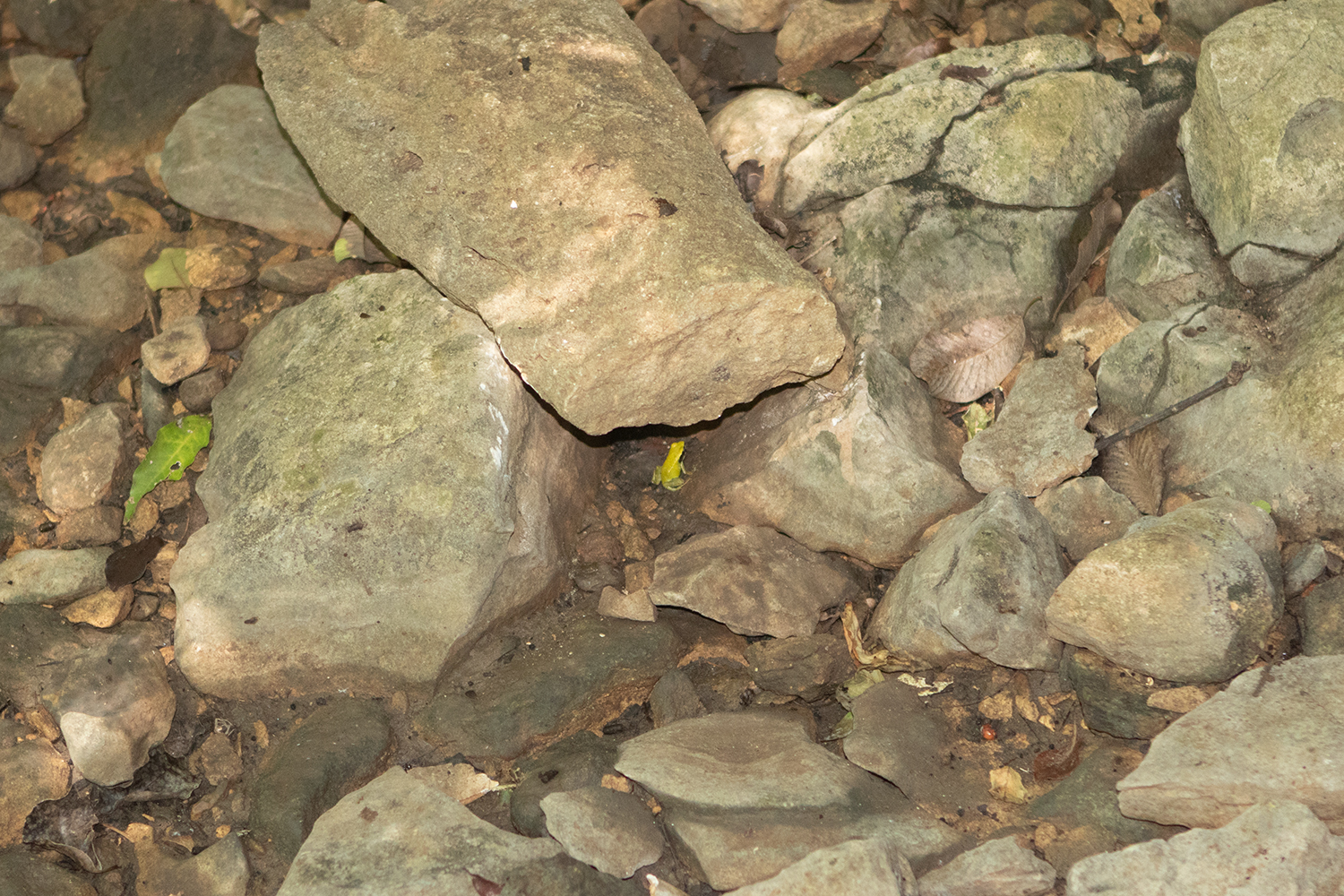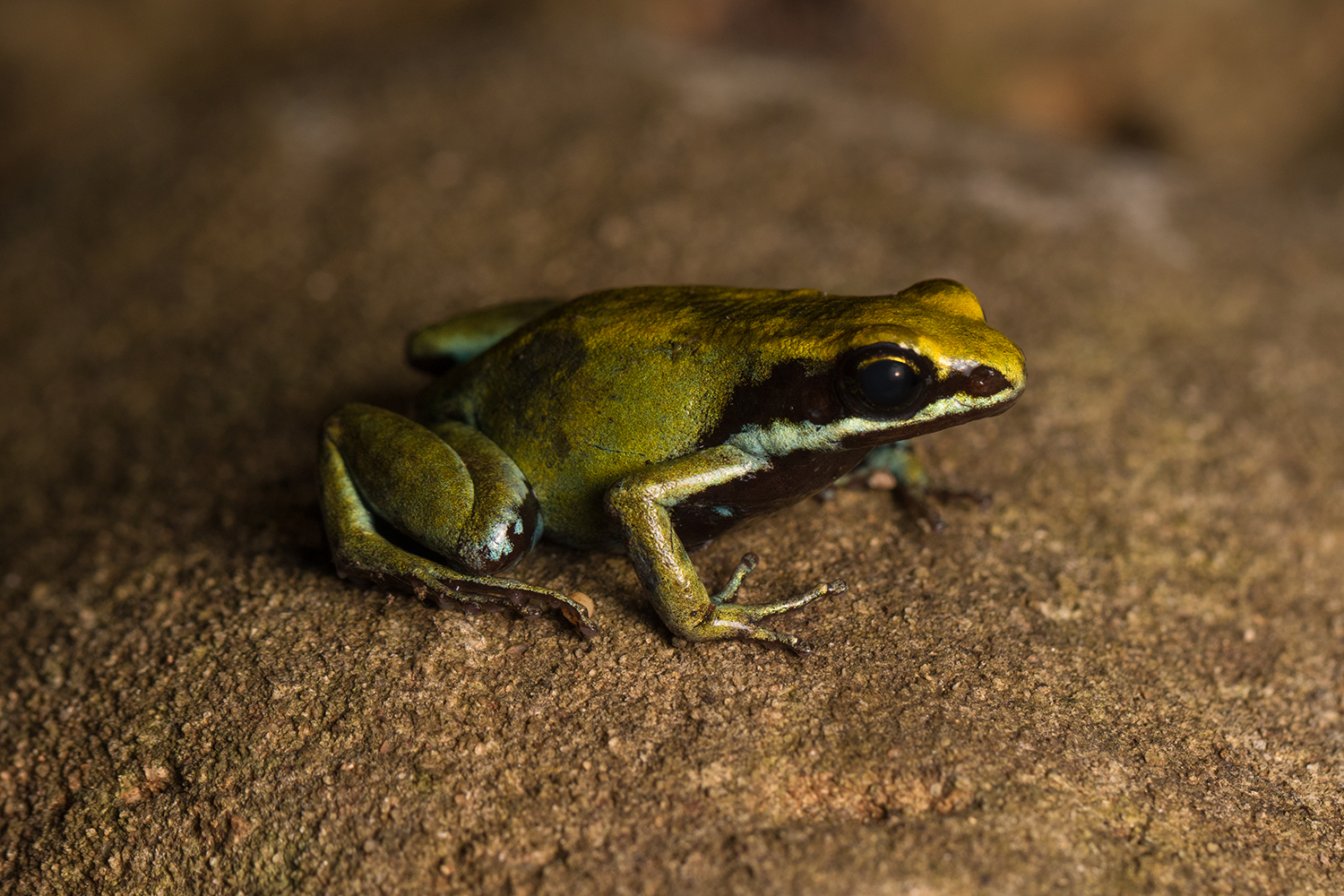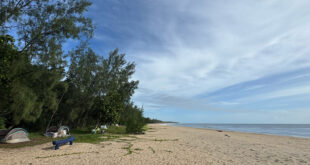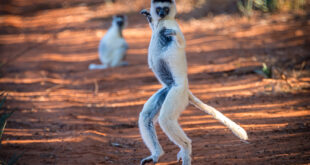In the very north of Madagascar lives a small coloured frog: Mantella viridis. The males grow to a length of two to two and a half centimetres, the females hardly reach more than three centimetres.
The small frog with the yellow-green back has several, small populations. On the one hand, Mantella viridis is found in the protected area of the Montagne de Français not far from the largest port city of Madagascar’s north, Antsiranana (French Diego Suarez). A second population also lives in a dry forest, but this is isolated on the small island of Nosy Hara northwest of Antsiranana. The two dry forests have in common that they are founded on karst rock and have been protected for years.
Both Mantella viridis occurrences live mainly along small streams, which guarantee their survival even during the harsh dry season. Because it is precise during this time that it is difficult for amphibians to survive in the dry, hot north of Madagascar.

Mantella viridis feed on tiny insects in the soil. The males court females with very short, clicking calls. When mating, the male clutches the female’s flanks with his front legs. The female lays the spawn under boulders near small remnants of water or dried-up brooks and the male fertilises the spawn. Then both go their separate ways again.
The first thunderstorms with persistent rainfall in November trigger the hatching of the tadpoles. It takes only one to three weeks until the tadpoles are ready to hatch. After three to four months, the metamorphosis from tadpole to frog is complete. At this age, the young frogs are still quite pale in colour. It takes a few months until they develop the characteristic adult colouration.
Mantella viridis is classified as “endangered” on the IUCN Red List. Not only grazing zebus on the slopes of the Montagne de Français and illegal logging are a threat to the frogs and their survival. The fragmented populations can currently no longer find each other, so genetic exchange becomes impossible. Climate change could also become a decisive factor. The amphibians already survive in the dry season only because there are still small puddles of water. If these disappear because of rising temperatures, entire generations of frogs could soon become extinct. A gloomy prospect for such a beautiful colourful frog.
But there is hope: Mantella viridis has been bred on a small scale outside Madagascar for years. Slowly but steadily, a small reserve population is being created that will hopefully prevent the extinction of the species.

 MADAMAGAZINE Your Magazine about Madagascar
MADAMAGAZINE Your Magazine about Madagascar




